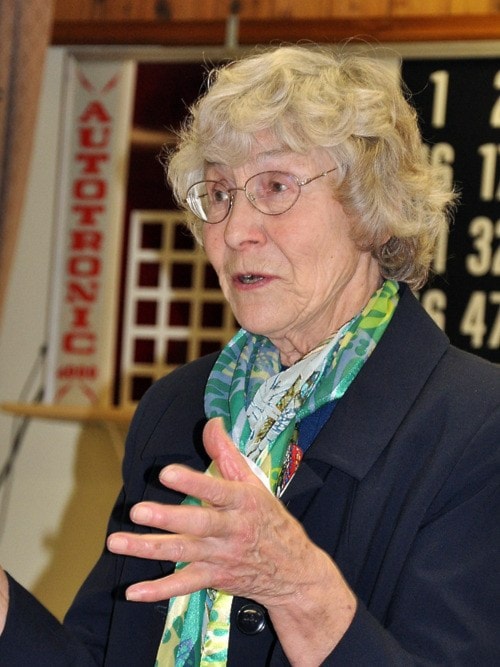On Sunday, April 22, at the Elks’ Hall, Clearwater kids celebrated Earth Day with an event called Flight of the Monarch Butterfly. The children started by coloring in a butterfly drawing and then cutting it out. This colorful paper butterfly was then pinned on clothes or put in their hair.
After a nice lunch with various homemade soups, quesadilla’s, and goodies, Sharon Neufeld and Cheryl Thomas spoke about their magical visit to the El Rosario Monarch Butterfly Sanctuary near Toluca in Mexico. El Rosario is one of three butterfly sanctuaries in Mexico.
“There are so many butterflies that when they fly up it sounds like a waterfall, which is why it is called the rain of the butterflies,” said Cheryl Thomas.
After their foreword, Sharon and Cheryl introduced Helen Knight, who has studied butterflies and insects, to talk more about the monarch butterfly.
“Monarch butterflies are very specific in regards to the plants they feed on,” Knight said. “They need milkweed to survive.”
Milkweed gives them a natural protection for predators because it has a poison that makes the monarch butterflies not palatable, which means that when the birds eat these butterflies they will vomit and leave them alone.
Milkweed is not common in our region and for that reason Knight did not think monarch butterflies lived in Kamloops until, one day in the summer before she moved to Clearwater, she saw one monarch butterfly on the side of the road.
“I went on a little tour because if there are monarch butterflies, there must be milkweed,” Knight said.
Two blocks from her Kamloops home she found a patch of it along with six monarch caterpillars.
“For the next three weeks every day I would go down the bank and watch the caterpillars grow,” she told the audience. As they grow bigger they grow out of their skin and change it. This happens at least four times before one day the caterpillar attaches himself to the midrib of the milkweed leaf and changes into a chrysalis.
“All butterflies have chrysalises but the monarch butterfly has the most beautiful one,” Helen said.
One day, one of the milkweed leaves that had a caterpillar in his chrysalis attached to it had broken off and fallen on the ground and she was able to take it home. She had the honor of watching the caterpillar evolve into a butterfly and split out of the chrysalis.
When the butterfly comes out of its chrysalis it has an out of proportion abdomen and small wings. The body of the butterfly will then start the process of filling out its wings. This is done with the fluid that is held in the abdomen. When the size of the abdomen normalizes and the wings have filled out the butterfly is ready to fly away. “This butterfly would have migrated south and overwintered in Monterey,” Helen said.
Interestingly, monarch butterflies migrate. The monarch butterflies will only go as north as where milkweed grows. When it warms up the butterflies wake up, they fly north, find a mate, mate, then find milkweed, lay their eggs, and die. Yet, towards the middle of July the last generation doesn’t mature sexually. Instead they travel south so they will stay alive and overwinter in Mexico. With this Helen Knight concluded her talk and the audience had a last opportunity to admire her boxes filled with butterflies that she has collected over the years.
